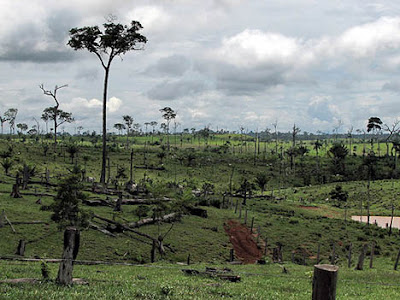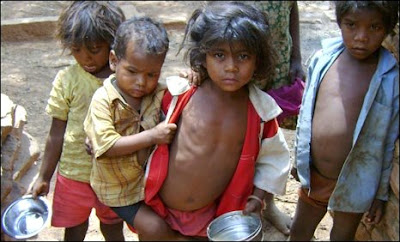"Jungle toh munshi ka hain." These words stayed with me throughout and even after my stay in Singrauli, the so called energy capital of the country. We travelled to Singrauli, deep inside the Mahan forest to bear witness to the critical issues in the region such as displacement, poverty, and injustice, related to coal mining.
Being rich in mineral resources has become the biggest problem for this region. The administration and the companies have been hovering around to extract everything out of them. Our mission was to promote awareness and to aid in the implementation of the 2006 Community Forests Right Act which was talked about in the public meeting held on 6th May 2012.
We had about 300-350 villagers assembled from different villages for the meeting. This meeting enabled the villagers to voice their opinion, worries and problems. Anil Nimbhorkar from NIWCYD's and Member of Parliament , CPI (M) M.B. Rajesh spoke about the critical issues concerning displacement, forest rights, which was a huge success in creating awareness among the villagers.
Almost the entire population of Mahan depends on the forest for their livelihood. The Mahua and Tendu forest, which covers half the region, is a major source of income. It is sad that this region, so rich in mineral resources, is very poor in all other aspects, suffering from exploitation, development and displacement. Singrauli the energy capital of the country does not have proper power supply in its villages. This is the reality of Singrauli.
Imagine a scenario where the forest gets clearance for coal mining. The villagers who are so used to living in big plots of lands will be displaced to a 30/40 plot apartment and will have to live in sub-human conditions. They will be lured with the promise of jobs, health centres, schools, and electricity, to give away their lands and will be forced to live in these conditions while the promises will remain unfulfilled.
Raising awareness about environmental issues also includes changing the mindset, which is quite a task in a region where the minds have already been shaped by the lies of the companies, administrations, munshis and dalals. They have been silenced by those who have a higher power.
It was as if we were up to something bad, and all we did was distribute pamphlets, talk to people about their rights and our main aim being to bring the villagers to the meeting. All this was perceived as a threat to the companies. Strangely 'the good is the new bad' for the people in power.
Being in Mahan for just few days opened my eyes to things which I had never imagined. It is a dirty world created by the corporate greed; you have to be there to experience it. It wouldn't be fair to rank Singrauli as a wasted place.
It is not that these people are hopeless. The young generation has a lot of thoughts and questions which can be used as an instrument to bring about mobilisation. This is a ray of hope, the young generation and anybody with a heart to help can bring about change in this region.
Source: Nambie






